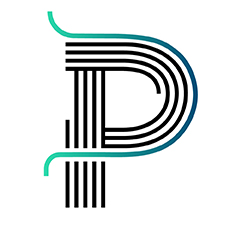Ultimo aggiornamento: 02/06/2025
Sustainability and Innovation
The Prato Textile District has been a pioneering model of the circular economy applied to textiles for decades. Since the mid-19th century, the regeneration of discarded garments has given rise to an entire supply chain dedicated to the production of recycled wool—today considered one of the most advanced and sustainable processes in the global textile industry.
A Historic Specialization
Prato is the world leader in the production of carded wool fabrics, thanks to a long-standing tradition dating back to the 1800s. Its system is based on recycling production waste, garment offcuts, and used clothing—a true circular economy model before the term even existed. This approach has positioned the district at the forefront of sustainability, contributing significantly to waste reduction and minimizing the environmental impact of one of the world’s most polluting industries: fashion.
Global Export Leadership
- Italy accounts for 50.5% of the global export value of carded wool fabrics.
- Over 90% of Italy’s exports in this sector come from the Prato district.
- As a result, nearly half of the global exports of carded wool fabrics are produced in Prato.
Annual Production of Carded Yarns
- Between 35,000 and 40,000 tons of carded yarns are processed annually.
- Around 100 million square meters of fabric are produced each year.
- Approximately 28,000 tons per year of yarns come from regenerated fibers, recovered from pre- and post-consumer textile waste.
- This represents about 80% by weight of the fabrics produced in the district.
The Process: From Rags to High-Quality Fabrics
It all begins with the "cenciaioli"—skilled workers who manually sort textile rags by color and fiber composition. This initiates a highly specialized process, including:
- Washing and drying of rags
- Mechanical tearing and shredding
- Carbonizing to remove non-textile residues
- Carded spinning and weaving
- Dyeing and finishing
This system enables effective upcycling, turning old clothes into high-quality yarns and fabrics.
Industrial Organization
Prato is the Italian province with the highest concentration of companies in a single sector— textile and fashion, which accounts for over 80% of local manufacturing activity. The textile industry developed with the typical characteristics of a district-based structure, featuring vertical specialization of enterprises by production phase. Final product manufacturers (yarns and fabrics) handle product design, commercial development, and raw material procurement, while processing operations are largely outsourced to highly specialized subcontractors located within the district.
Percentage share of local subcontractors in the textile production of the Prato district
Source: Prof. Filippo Visintin, RESTART MICS – Made in Italy Circular and Sustainable Survey, Extended Partnership funded by the Ministry of University and Research with PNRR resources
Services to businesses, transportation, schools, professionals, banks, and other manufacturing sectors such as textile machinery and chemicals are almost entirely functional to the core sector, which is textile and fashion. It is therefore evident that the strong interconnections between companies in different phases within a self-contained territorial system make the entire district potentially vulnerable to changes affecting even a single component.
Sustainable fashion, conscious design
In Prato, sustainability is also linked to eco-design: creating durable garments that are easy to disassemble, made with recyclable and separable fibers, and have a low energy footprint. This is the direction the district is moving towards, driven by a new generation of companies, designers, and workers.
Compared to other Italian textile districts, companies in the Prato textile district use a higher percentage of recycled and certified textile raw materials and by-products. Moreover, the share of revenue from recycled products is greater than in other districts.
These are the findings of the RESTART project, which is part of the MICS – Made in Italy Circular and Sustainable initiative, an extended partnership funded by the Ministry of University and Research, supported by PNRR resources.
A future to build
Today, the district needs new skills and specialization, in a production context increasingly open to women and young people. Sustainability is an ongoing challenge that combines technological innovation, social responsibility, and a culture of craftsmanship.
The district’s companies therefore share the sustainability and circularity goals set by Europe for the textile sector and trust that the measures under development will enhance the awareness and expertise cultivated locally.
However, there are potential critical issues which, if not addressed, could have very negative effects on the European and especially the Italian manufacturing system. It is our intention to contribute to pursuing these objectives by promoting sustainable development within the business system, while safeguarding companies from risks that we briefly outline below.
Avviso sull'utilizzo dei cookies
Utilizziamo soltanto cookie necessari al corretto funzionamento delle pagine e cookie di Matomo (statistiche anonime senza raccolta di dati personali). Per maggiori informazioni consultare la nostra Cookie Policy.
